|
Books Should Be Free Loyal Books Free Public Domain Audiobooks & eBook Downloads |
|
|
Books Should Be Free Loyal Books Free Public Domain Audiobooks & eBook Downloads |
|
Books of Memoirs |
|---|
|
Book type:
Sort by:
View by:
|
By: Mabel Annie Stobart (1862-1954) | |
|---|---|
 War and Women
War and Women
"The sending of a Women’s Convoy Corps to the Balkans was the result of Mrs. Stobart’s keen desire to demonstrate the ability of women to render signal service under war conditions and without the direction and assistance of men. This record of their achievements, therefore, provides a strong vindication of the claims of women to inclusion in the Territorial Defence Scheme". | |
By: Mae Marsh (1894-1968) | |
|---|---|
 Screen Acting
Screen Acting
Silent film star, Mae Marsh, recounts her life as an actress in this publication, what she deems as being the answer to thousands of letters written to her over the years inquiring about what it takes to be a screen actor. As she states in the introduction, "So much ambition, so many questions!" - Summary by Amanda Friday | |
By: Margaret Fuller (1810-1850) | |
|---|---|
 Woman in the Nineteenth Century and Kindred Papers Relating to the Sphere, Condition, and Duties of Women
Woman in the Nineteenth Century and Kindred Papers Relating to the Sphere, Condition, and Duties of Women
Margaret Fuller (1810-1850) was an American feminist, writer, and intellectual associated with the Transcendentalist movement. Her book Woman in the Nineteenth Century (1845) is considered the first major feminist work in the United States. Her life was short but full. She became the first editor of the transcendentalist journal The Dial in 1840, before joining the staff of the New York Tribune under Horace Greeley in 1844. By the time she was in her 30s, Fuller had earned a reputation as the best-read person in New England, male or female, and became the first woman allowed to use the library at Harvard College... | |
 Summer on the Lakes, in 1843
Summer on the Lakes, in 1843
Margaret Fuller, the American early proponent for Women's rights, writes of her visits to the Great Lakes in the summer of 1843. - Summary by KevinS | |
By: Margaret Herschel (1810-1884) | |
|---|---|
 Memoir and Correspondence of Caroline Herschel
Memoir and Correspondence of Caroline Herschel
For many people, the name Caroline Herschel will be unfamiliar, but she was one of the most significant women on the English scientific scene during the late 18th and early 19th century. Sister of the well known William Herschel , she first worked as his assistant in his astronomical works, and then went on to become a noted astronomer in her own right. She discovered eight new comets in her lifetime, and was the first woman to be paid for her contribution to science, and was awarded a Gold Medal... | |
By: Maria Edgeworth (1768-1849) | |
|---|---|
 Castle Rackrent
Castle Rackrent
| |
By: Maria Gowen Brooks (1794-1845) | |
|---|---|
 Idomen, or The Vale of Yumuri
Idomen, or The Vale of Yumuri
Idomen (1843) is the creative-nonfiction memoir of the beautiful and brilliant American poetess Maria Gowen Brooks, who was compared in the 19th century to Byron and Swinburne. In it she tells the story of an ill-fated love affair she had twenty years earlier while traveling with her young son in Canada following the death of her much older husband. The traumatic breakup led to suicide attempts on her part, which romantic masochist Brooks byronically relates in full, albeit changing everybody's name... | |
By: Maria W. Stewart (1803-1879) | |
|---|---|
 Meditations from the Pen
Meditations from the Pen
Maria W. Stewart was America's first black woman political writer. Between 1831 and 1833, she gave four speeches on the topics of slavery and women's rights. Meditations From The Pen of Mrs. Maria W. Stewart—published in 1879 shortly before her death—is a collection of those speeches as well as her memoir, some meditations and prayers. They are political, poetical and sermon all at the same time; but in the mileu in which she lectured, they were a critically important part of the abolitionist movement years before the contributions of others such as Frederick Douglass and Sojourner Truth... | |
By: Marie Stopes (1880-1958) | |
|---|---|
 Journal from Japan
Journal from Japan
Marie Stopes was a highly controversial scientist and activist in her era, campaigning for radical new views of love-based marriage, birth control, and women’s rights. As a scientist, she was a renowned palaeobotanist, specializing in issues concerning coal; these scientific pursuits led her to spend several years in Japan, where she went into some of the country's remotest coal mines to study fossils. While there, she pursued a notorious relationship with Japanese botanist Fujii Kenjiro as well as several romantic dalliances with European women in the lively Tokyo diplomatic community... | |
By: Marie Sukloff (1885-) | |
|---|---|
 Life-Story of a Russian Exile
Life-Story of a Russian Exile
Hero or assassin? Victim or criminal? Marie Sukloff fits no easy category. A young peasant woman who became a political radical and activist, Sukloff carried out an assassination plot against a Russian governor known for murderous pogroms and rampages against the Jews of his province. This mesmerizing autobiographical account tells the story of Sukloff's peasant childhood, radicalization, direct action, exile to Siberia, and escape. She tells her story with a colorful verve, sincerity, intensity, and simplicity that makes it almost impossible to put down, raising questions of political philosophy and responsibility that challenge the complacency of every reader. | |
By: Mark Twain (1835-1910) | |
|---|---|
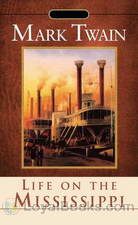 Life on the Mississippi
Life on the Mississippi
A river memoir documenting Twain’s early days as an apprentice steamboat pilot on the Mississippi River before the American Civil War. Reminiscing about his happy experiences as a young man under the instruction of an experienced mentor, the autobiographical tale depicts one of the most vivid illustrations of river life. Furthermore, the book captures the author’s nostalgic emotions through his resonant depiction of one of the most notable periods of his life. Twain begins his memoir with a rich historical account of the Mississippi River including its exploration by early explorers, its evolution, and its vastness... | |
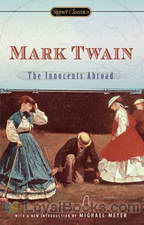 The Innocents Abroad
The Innocents Abroad
When you dive into Mark Twain’s (Samuel Clemens’) The Innocents Abroad, you have to be ready to learn more about the unadorned, ungilded reality of 19th century “touring” than you might think you want to learn. This is a tough, literary journey. It was tough for Twain and his fellow “pilgrims”, both religious and otherwise. They set out, on a June day in 1867, to visit major tourist sites in Europe and the near east, including Greece, Turkey, Lebanon, Syria, “the Holy Land”, and Egypt... | |
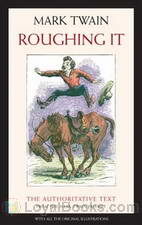 Roughing It
Roughing It
The semiautobiographical travel memoir records Twain’s, more or less, personal journey across the Wild West in search of adventure while exploring variable locations. Accompanying his brother on what becomes a trip of a lifetime, the young Samuel Clemens finds himself in many different vocational roles as he explores and observes the magnificence of the American West. Not refraining from the usual social commentary, Twain directs criticism on various social and moral issues which he approaches through his sly and witty style... | |
 Personal Recollections of Joan of Arc, Volumes 1 & 2
Personal Recollections of Joan of Arc, Volumes 1 & 2
Mark Twain’s work on Joan of Arc is titled in full “Personal Recollections of Joan of Arc, by the Sieur Louis de Conte.” De Conte is identified as Joan’s page and secretary. For those who’ve always wanted to “get behind” the Joan of Arc story and to better understand just what happened, Twain’s narrative makes the story personal and very accessible. The work is fictionally presented as a translation from the manuscript by Jean Francois Alden, or, in the words of the published book, “Freely Translated out of the Ancient French into Modern English from the Original Unpublished Manuscript in the National Archives of France... | |
By: Martha Summerhayes (1844-1911) | |
|---|---|
 Vanished Arizona: Recollections of the Army Life of a New England Woman
Vanished Arizona: Recollections of the Army Life of a New England Woman
This is the lively autobiography of Martha Summerhayes, the wife of an officer in the American Army. Here, she tells many stories about life and conditions in different camps and forts in which she lived with her expanding family, people along the way, and Journeys. | |
By: Martin Alonzo Haynes (1842-1919) | |
|---|---|
 Minor War History
Minor War History
A personal history of the American Civil War taken from the author's own letters to 'the girl he left behind', who later became his wife. This is not a complete history and does not deal with major events, but is a snapshot of life in the Second New Hampshire Regiment and humanizes the history we study. Haynes went on to have an illustrious career. After the war, he founded a local newspaper, of which he was editor. He was also elected to the New Hampshire House of Representatives, and became clerk to the county Supreme Court... | |
By: Mary Antin (1881-1949) | |
|---|---|
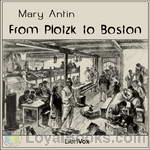 From Plotzk to Boston
From Plotzk to Boston
An intensely personal account of the immigration experience as related by a young Jewish girl from Plotzk (a town in the government of Vitebsk, Russia). Mary Antin, with her mother, sisters, and brother, set out from Plotzk in 1894 to join their father, who had journeyed to the “Promised Land” of America three years before. Fourth class railroad cars packed to suffocation, corrupt crossing guards, luggage and persons crudely “disinfected” by German officials who feared the cholera, locked “quarantine” portside, and, finally, the steamer voyage and a famiily reunited... | |
By: Mary Chesnut | |
|---|---|
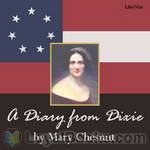 A Diary from Dixie
A Diary from Dixie
Mary Boykin Miller Chesnut, a well-educated South Carolina woman who was the wife of a Confederate general, kept extensive journals during the Civil War. Mrs. Chesnut moved in elite circles of Southern society and had a keen interest in politics. Her diary is both an important historic document and, due to her sharp wit and often irreverent attitude, a fascinating window into Southern society of the time. This recording is of the first published edition of the diary, compiled from Mrs. Chesnut's revisions of her original journals. | |
By: Mary Emily Donelson Wilcox (1829-1905) | |
|---|---|
 Christmas Under Three Flags
Christmas Under Three Flags
This work details personal memories of Mary Emily Donelson Wilcox, adopted granddaughter of Rachel Donelson Jackson, wife of President Andrew Jackson, and assumed to be the first baby born in the White House. The book focuses on three Christmas memories--the first of a Christmas in the White House during the 1830's and Jackson's Presidency; the second, a Christmas in Prussia at the home of the Crown Prince, to which she was invited because her father was US minister to Berlin; the last story, a Christmas in Texas in the 1830s... | |
By: Mary Hunter Austin (1868-1934) | |
|---|---|
 Woman of Genius
Woman of Genius
In this 1912 novel, Mary Hunter Austin draws inspiration from her own life to tell the story of a gifted woman caught between her public ambition and her private desire. Beginning with her post-Civil War Midwestern girlhood, Austin chronicles the tumultuous life -- its romantic and artistic challenges -- of "tragic actress" Olivia Lattimore. With lyrical insight, she explores the many social and economic obstacles talented women like Olivia face in their pursuit of self-fulfillment. In America’s cynical Gilded Age, Austin asks, can a “woman of genius” find both happiness and success? Summary by Amy Dunkleberger | |
By: Mary MacLane (1881-1929) | |
|---|---|
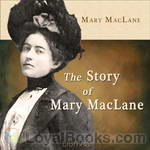 The Story of Mary MacLane
The Story of Mary MacLane
At the age of 19 in 1902, MacLane published her first book, The Story of Mary MacLane. It sold 100,000 copies in the first month and was popular among young girls, but was strongly criticized by conservative readers, and lightly ridiculed by H. L. Mencken. She had always chafed at living in Butte, which was a small mining town, and used the money from sales of this book to move to Greenwich Village where she continued to write books and newspaper articles. Some critics have suggested that even by today’s standards, MacLane’s writing is raw, honest, unflinching, self-aware, sensual and extreme... | |
By: Mary Rhodes Waring Henagan | |
|---|---|
 Two Diaries From Middle St. John's, Berkeley, South Carolina, February - May, 1865
Two Diaries From Middle St. John's, Berkeley, South Carolina, February - May, 1865
Two diaries from Middle St. John’s, Berkeley, South Carolina, February – May, 1865. Journals kept by Miss Susan R. Jervey and Miss Charlotte St. Julien Ravenel, at Northampton and Poooshee Plantations, and reminiscences of Mrs. Henagan. With two contemporary reports from Federal officials. Published by the St. John’s Hunting Club, Middle St. Johns, Berkeley, South Carolina, 1921. - Summary by Book title and david wales | |
By: Mary Roberts Rinehart (1876-1958) | |
|---|---|
 Through Glacier Park
Through Glacier Park
This is about a three-hundred mile trip across the Rocky Mountains on horseback with Howard Eaton. It is about fishing, and cool nights around a camp-fire, and long days on the trail. It is about a party of all sorts, from everywhere, of men and women, old and young, experienced folk and novices, who had yielded to a desire to belong to the sportsmen of the road. And it is by way of being advice also. Your true convert must always preach. (Introduction by Mary Roberts Rinehart quoted from the text.) | |
By: Mary Rowlandson (c.1637-1711) | |
|---|---|
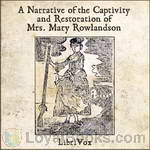 A Narrative of the Captivity and Restoration of Mrs. Mary Rowlandson
A Narrative of the Captivity and Restoration of Mrs. Mary Rowlandson
This is the story of Mary Rowlandson’s capture by American Indians in 1675. It is a blunt, frightening, and detailed work with several moments of off-color humor. Mary, the wife of a minister, was captured by Natives during King Philips War while living in a Lancaster town, most of which was decimated, and the people murdered. See through her eyes, which depict Indians as the instruments of Satan. Her accounts were a best-seller of the era, and a seminal work, being one of the first captivity narratives ever published by a woman... | |
By: Mary Russell Mitford (1787-1855) | |
|---|---|
 Our Village, Volume 1
Our Village, Volume 1
This book is a compilation of short stories originally published in several series in The Lady's Magazine. Volume 1 covers a period of about 18 months, then later, Volume 2 chronicles the changes when Miss Mitford returns to the village some 2 years later. The book's subtitle is “sketches of rural character and scenery”... and this perfectly describes its contents. People and nature are minutely observed and the language reflects Miss Mitford's exquisite eye for detail and love of the changing seasons and the impact they have on the flora and fauna around her... | |
By: Mary Stuart Boyd (1860-1937) | |
|---|---|
 Versailles Christmas-Tide
Versailles Christmas-Tide
The Boy has fallen ill with scarlet fever while at school in France. His parents rush to his side. A touching memoir. | |
By: Mary Wollstonecraft (1759-1797) | |
|---|---|
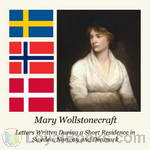 Letters Written During a Short Residence in Sweden, Norway and Denmark
Letters Written During a Short Residence in Sweden, Norway and Denmark
Published in 1796, Letters Written During a Short Residence in Sweden, Norway, and Denmark is a personal travel narrative by the eighteenth-century British feminist writer Mary Wollstonecraft. The twenty-five letters cover a wide range of topics, from sociological reflections on Scandinavia and its peoples to philosophical questions regarding identity. Published by Wollstonecraft's career-long publisher, Joseph Johnson, it was the last work issued during her lifetime. Wollstonecraft undertook her tour of Sweden, Norway, and Denmark in order to retrieve a stolen treasure ship for her lover, Gilbert Imlay... | |
By: Matthew A. Henson (1866-1955) | |
|---|---|
 Negro Explorer at the North Pole
Negro Explorer at the North Pole
In this fascinating memoir, Matthew Henson describes the incredibly dangerous, exhausting, and bone-chilling trip to what was until then the never-before reached point on earth, the North Pole. "Robert Peary is remembered as the intrepid explorer who successfully reached the North Pole in 1909. Far less celebrated is his companion, Matthew Henson, a black man from Maryland. Henson's gripping memoir, first published in 1912, tells this unsung hero's story in his own words. Henson...was indispensable to the famous explorer's journey; he learned the language of the Eskimos, was an expert dog-sled driver and even built the sleds... | |
By: Maurice Baring (1874-1945) | |
|---|---|
 Lost Diaries
Lost Diaries
Within these pages find passages from the "lost diaries" of a wide range of people: royal, regular, famous, infamous, historical, and fictional. - Summary by A. Gramour | |
By: May Kellogg Sullivan | |
|---|---|
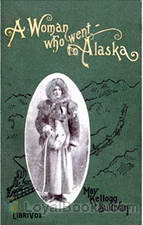 A Woman Who Went to Alaska
A Woman Who Went to Alaska
Alaska has only been a state since 1959, and the breathtaking terrain remains mostly unspoiled and natural. In modern times, many of us have had the pleasure of visiting Alaska via a luxurious cruise ship, where we enjoyed gourmet meals, amazing entertainment, and a climate-controlled environment. It's easy to also book a land package that enables you to see more of the country by train.Imagine what it was like to visit the same wild, untamed countryside in 1899. Instead of boarding a sleek, stylish cruise ship, you travel for weeks on a steamer... | |
By: Meriel Buchanan (1886-1959) | |
|---|---|
 Recollections of Imperial Russia
Recollections of Imperial Russia
In this memoir, Meriel Buchanan links the history of Russia to powerful, lingering memories of her years living there. She was the daughter of the man who turned out to be the last British ambassador to Imperial Russia. As a young adult, in her role as the ambassador’s daughter, she had regular access to the court of Tsar Nicholas II of Russia, providing her with unusual experiences and impressions. She describes first hand the sights, sounds, and some of the activities she remembers from this elevated and sheltered vantage point. The family left Russia in 1918, and the author’s memories are filled with nostalgia and longing for the Russia she experienced. - Summary by Jan M. | |
 Petrograd, the City of Trouble, 1914-1918
Petrograd, the City of Trouble, 1914-1918
The author of this work was the daughter of the British ambassador to Russia. She was in St. Petersburg from before World War I to after the Bolshevik Revolution, leaving in January 1918. Rather than a dry retelling of the history of this period, the author gives a more personal view of the events, as she lived through them. - Summary by TriciaG | |